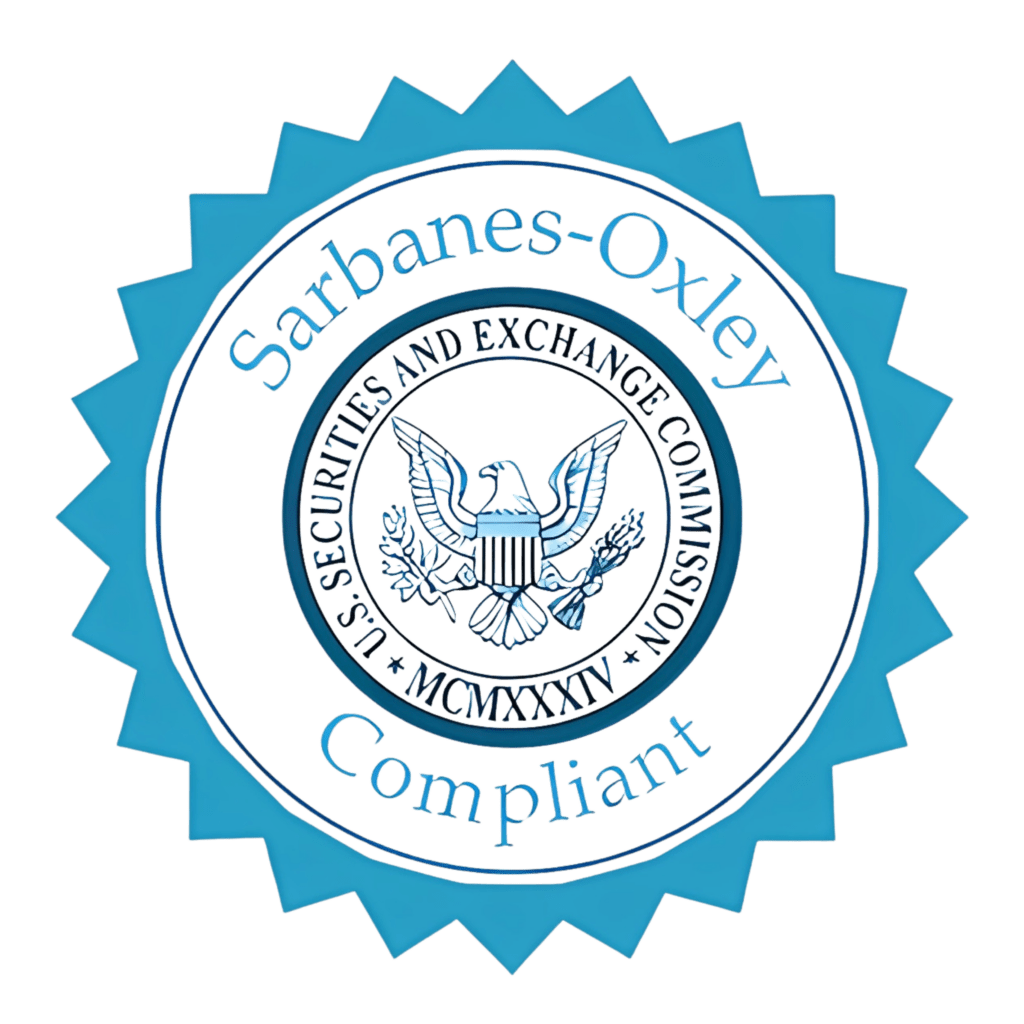In recent years, the IRS has been paying much closer attention to large partnerships. With billions of dollars in business income flowing through partnership returns each year, the government wants a clearer picture of how book income compares to taxable income. That’s where Form 1065 Schedule M-3 makes a difference.
Schedule M-3 acts as a transparency tool. It provides the IRS with a detailed reconciliation of a partnership’s financial accounting income and its taxable income reported on Form 1065. While smaller businesses often use the simpler Schedule M-1, larger partnerships are required to provide more detail, making Schedule M-3 the standard for high-asset partnerships.
If your partnership has $10 million or more in assets, you may fall into the group of taxpayers who must file this schedule. This article explains what Form 1065 Schedule M-3 is, who must file Schedule M-3 1065, how it works, and it answers the most common taxpayer questions.
Table of Contents
What Is Form 1065 Schedule M-3?
Form 1065 Schedule M-3 (Net Income (Loss) Reconciliation for Certain Partnerships) is a supplemental schedule that partnerships use to explain the differences between their book income (reported on financial statements) and their taxable income (reported on the partnership tax return).
Schedule M-3 answers the question: Why doesn’t the income on our financial statements match the income reported to the IRS?
This form exists because larger partnerships often have complex accounting differences—such as depreciation, amortization, foreign income, or permanent adjustments—that need to be broken down in more detail. By requiring partnerships to file Schedule M-3 instead of Schedule M-1, the IRS ensures greater transparency, helping them spot inconsistencies or aggressive tax positions more quickly.
Put simply, Form 1065 Schedule M-3 gives the IRS a line-by-line breakdown of income and expenses so they can verify the accuracy of what’s being reported.

Who Must File Form 1065 Schedule M-3?
One of the most common questions taxpayers ask is, “Who must file Schedule M-3 1065?”
According to the IRS, any partnership with total assets of $10 million or more at the end of the tax year must file Form 1065 Schedule M-3. This threshold is the key factor in determining whether your partnership is required to use the detailed reconciliation schedule.
That said, smaller partnerships also have the option to file Schedule M-3 voluntarily if they want to provide more transparency. While not common, some businesses choose this route to maintain consistency with other entities in a consolidated group.
Do all partnerships need to file Schedule M-3?
Not necessarily. Only partnerships with $10 million or more in assets are required to file. Smaller partnerships can continue to use Schedule M-1 unless they choose to voluntarily file M-3.
What is the threshold for filing Schedule M-3?
The threshold is $10 million in assets. If your partnership crosses that mark, filing Form 1065 Schedule M-3 becomes mandatory.
If your partnership is relatively small, Schedule M-3 probably won’t apply. But if you manage a large or complex partnership, this form is a critical part of your IRS reporting obligations.
Form 1065 Schedule M-3 Instructions: How to Complete It
Filling out Schedule M-3 may feel overwhelming; however, breaking it down step by step makes it easier. Below is a simplified guide to understanding the 1065 M-3 instructions and how each section works.
Part I – Financial Information and Net Income (Loss) Reconciliation
- In this section, partnerships report book income based on their financial statements.
- You must specify the source of financial reporting (e.g., GAAP financials, SEC filings, or other accounting standards).
- This is also where you reconcile worldwide consolidated income to the partnership’s own book income.
- Common taxpayer concern:What is book income vs. tax income?
- Book income = what’s reported under financial accounting rules (e.g., GAAP).
- Tax income = what’s reportable to the IRS under tax law. Schedule M-3 explains the differences between the two.
Part II – Reconciliation of Net Income (Loss) Items
- This section focuses on income differences.
- You must separate:
- Temporary differences—timing issues (e.g., depreciation methods that differ for tax vs. books).
- Permanent differences—items that will never align (e.g., tax-exempt income).
- Example: A partnership may depreciate an asset faster for tax purposes than for financial reporting. This creates a temporary difference that the IRS wants explained.
Part III – Reconciliation of Expense/Deduction Items
- This section deals with expense items where book and tax treatments diverge.
- Common examples include:
- Meals and entertainment expenses (partially deductible for tax).
- Fines and penalties (not deductible for tax).
- Certain reserves and accruals are recognized differently for book vs. tax.
- The goal is to give the IRS a clear picture of why expenses on your tax return do not perfectly match those on your financial statements.
Following the Form 1065 Schedule M-3 filing requirements means carefully documenting every adjustment between your partnership’s financial income and its taxable income, making sure you complete all three parts accurately.
Schedule M-3 vs. Schedule M-1
A common point of confusion is whether a partnership should file Schedule M-1 or Schedule M-3. Both schedules serve the same basic purpose—reconciling book income with taxable income—but the level of detail differs greatly.
Here’s a quick comparison:
| Feature | Schedule M-1 | Schedule M-3 |
| Who files | Smaller partnerships | Partnerships with ≥ $10M in assets |
| Detail level | Summary only | Line-by-line reconciliation |
| Transparency | Lower | Much higher |
| IRS oversight | Limited detail | Stronger review capability |
What’s the difference between Schedule M-1 and Schedule M-3?
→ Schedule M-1 is simpler and used by smaller partnerships. Schedule M-3 is more detailed and required for large partnerships with $10M+ in assets.
When do I file M-3 instead of M-1?
→ You must file Schedule M-3 when your partnership meets the IRS’s $10 million asset threshold. Smaller partnerships can still use M-1 unless they voluntarily choose M-3.
Common Mistakes When Filing Schedule M-3
Even experienced partnerships make errors when filing Form 1065 Schedule M-3. The form is technical and detailed, which leaves room for mistakes that can lead to penalties or IRS scrutiny. Some of the most frequent issues include:
1. Misclassifying temporary vs. permanent differences
A temporary difference (like depreciation timing) may be mistakenly reported as a permanent difference (like tax-exempt income).
2. Forgetting to reconcile all income/expenses
Every variance between book and tax income must be explained. Missing even one item can result in inconsistencies.
3. Errors in financial statement reporting.
Using the wrong financial basis (GAAP vs. non-GAAP) or failing to tie numbers back to audited statements can trigger red flags.
4. Not attaching Schedule M-3 when required.
If your partnership meets the Form 1065 Schedule M-3 filing requirements but does not attach the schedule, the IRS may treat the return as incomplete, potentially leading to late-filing penalties.
Why the IRS Cares About Schedule M-3
When it comes to partnerships with billions of dollars in combined assets, the IRS wants more than a high-level overview. Form 1065 Schedule M-3 provides the agency with the detailed information it needs to track book-to-tax differences that could otherwise hide tax shelters or aggressive accounting practices.
The primary reason the IRS requires large partnerships to file Schedule M-3 is transparency. By forcing partnerships to explain each adjustment line by line, the IRS can:
- Detect tax strategies that shift income or delay recognition.
- Spot aggressive deductions or items that may not be allowed under tax law.
- Compare reporting trends across industries and partnerships.
Does Schedule M-3 increase audit risk?
Not necessarily—but it does give the IRS more insight into your financials. For large partnerships, Schedule M-3 is simply part of compliance. However, filing the form incorrectly, omitting required reconciliations, or failing to attach it when needed can raise red flags and increase the likelihood of an audit.
Understanding Form 1065 Schedule M-3 in 2025 means recognizing that it is less about triggering audits and more about providing the IRS with the transparency it needs to evaluate partnership tax reporting fairly.
Who Should Prepare Schedule M-3?
Another common concern for taxpayers is whether they can complete Form 1065 Schedule M-3 on their own or if they should rely on professional help. The answer depends on the size and complexity of your partnership.
Tax Professionals vs. DIY
- For small partnerships that don’t meet the filing requirements, Schedule M-1 is usually manageable in-house.
- But for partnerships with over $10 million in assets, Schedule M-3 requires detailed knowledge of both financial accounting and tax rules. Errors can lead to penalties or IRS challenges.
Why Larger Partnerships Outsource to CPAs
Most large partnerships outsource their Schedule M-3 preparation to a CPA or tax advisor because:
- CPAs understand the technical details of temporary vs. permanent differences.
- They can ensure the numbers reconcile properly with audited financial statements.
- Outsourcing reduces the risk of costly mistakes or overlooked reporting requirements.

Conclusion:
In conclusion, Form 1065 Schedule M-3 is all about transparency, accuracy, and compliance for large partnerships. If your business meets the filing requirements, typically $10 million or more in assets, understanding and properly completing this form is critical.
Filing incorrectly or failing to file can expose your partnership to penalties, unnecessary audit scrutiny, and compliance headaches. Filing correctly, on the other hand, shows the IRS that your partnership is transparent, accurate, and responsible.
If your partnership needs help with Understanding Form 1065 Schedule M-3 in 2025, don’t go it alone. Profitjets is a trusted and preferred Tax Advisor and Tax consultant, where certified and experienced experts handle your tax strategy, Tax filing, and use all relevant deductions to manage your tax liability. We take pride in providing the end-to-end service from bookkeeping to taxation and even advisory services like Virtual CFO Services. The wide array of services we offer includes outsourced accounting and bookkeeping, outsourced bookkeeping for CPAs, tax filing and corporate tax compliance services, and virtual CFO services. Get in touch with us so we can handle the filing of Form 1065 Schedule M-3 in 2025 this tax season.
FAQs About Form 1065 Schedule M-3
1. What is the purpose of Schedule M-3?
The purpose of Form 1065 Schedule M-3 is to reconcile the differences between a partnership’s financial accounting income (book income) and its taxable income reported on Form 1065. It provides the IRS with a more detailed breakdown than Schedule M-1, helping identify tax shelters, aggressive deductions, and unusual reporting practices in large partnerships.
2. Who is required to file Schedule M-3?
According to IRS guidelines, any partnership with total assets of $10 million or more at the end of the tax year must meet the Schedule M-3 filing requirements. Smaller partnerships are not required to file, though they can choose to do so voluntarily.
3. What is the difference between Schedule M-1 and Schedule M-3?
The main difference is the level of detail.
– Schedule M-1 provides a summary reconciliation between book income and taxable income.
– Schedule M-3 requires a line-by-line reconciliation with much more transparency.
If your partnership meets the $10 million threshold, you must file M-3 instead of M-1.
4. Does every partnership with over $10M in assets need to file?
Yes. If your partnership has $10 million or more in assets, filing Form 1065 Schedule M-3 is mandatory. Even if your business had no income during the year, the filing requirement still applies once you cross the threshold.
5. What happens if I don’t file Schedule M-3?
Failing to file Schedule M-3 when required can result in IRS penalties, an incomplete return status, or even a higher risk of audit. The IRS may treat the return as non-compliant, which can delay processing and trigger additional scrutiny.
6. Is Schedule M-3 required if I already file Schedule M-1?
No. Partnerships that meet the Form 1065 Schedule M-3 filing requirements must file M-3 instead of M-1. Smaller partnerships may continue using Schedule M-1, but they are not required to file both schedules.
7. How do book-to-tax differences affect my partnership return?
Book-to-tax differences affect your partnership return by explaining why financial statement income does not equal taxable income. For example, depreciation, meals and entertainment, and certain reserves are treated differently for accounting and tax purposes. Reporting these differences accurately on Schedule M-3 ensures compliance and reduces IRS concerns.
8. Do foreign-owned partnerships need to file Schedule M-3?
Yes, if a foreign-owned partnership meets the $10 million asset threshold, it must also comply with the Form 1065 Schedule M-3 filing requirements. Ownership structure does not exempt a partnership from filing; the filing requirement is based on total assets.
9. Can I file Schedule M-3 myself?
Technically, yes. If you’re confident in reconciling complex financial and tax data, you can prepare it yourself. However, given the complexity, most partnerships prefer professional help.
10. Do I need a CPA to prepare Schedule M-3?
While not legally required, hiring a CPA is strongly recommended. A CPA can ensure accuracy, compliance, and reduce the chance of audit-related issues.










